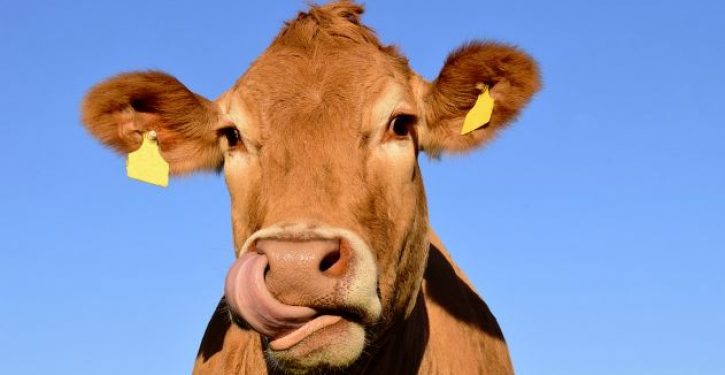
Globalist elites want humanity to eat bugs rather than meat, to reduce the amount of land being used to raise livestock. But what if livestock could be raised using far less land, letting us keep eating meat? That may soon be possible:
Chinese scientists have developed a cost-effective method of converting coal into protein, which they say could feed livestock much more efficiently than natural plants, while using a tiny fraction of the land.
According to Our World in Data, grazing land for livestock and farming land for animal feed production combine to take up…over a quarter of the Earth’s entire dry land area, and nearly 40% of the land defined as “habitable.”
This is one of the reasons the meat-heavy Western diet is under fire as environmentally unsustainable; growing plants to feed animals makes wretchedly inefficient use of land, which could otherwise be left as forest or used for other purposes.
One solution is moving toward lab-grown meat – but another may be to start producing protein for livestock feed using other methods. This would be a particular boon to China. According to Biotech researchers at the Chinese Academy of Sciences (CAS), the country is currently forced to import around 80% of its protein raw materials in the form of soybeans and the like – and that’s a serious food security issue for the nation.
So the team set about research into processes that could use fossil fuels to produce proteins, building on oil-to-protein biotechnology pioneered by BP as far back as the 1960s.
The CAS team’s process works something like this: firstly, coal is transformed into methanol via gasification – a technique that can now be executed with near-zero carbon emissions. That methanol is then fed to a special strain of Pichia pastoris yeast, which ferments the methanol to produce a single-cell protein complete with a range of amino acids, vitamins, inorganic salts, fats and carbohydrates. The resulting organism is much richer in protein than plants are, and it can be used to partially replace fish, soybeans, meat and skimmed milk in a range of animal feeds.
The team’s key innovation was in selecting and genetically engineering the yeast strain, making it more able to tolerate the toxic effects of methanol than previous strains in order to maximize conversion efficiency and minimize the amount of carbon lost during the process.
The result: a yeast that converts methanol into protein at a remarkable 92% of the maximum theoretical yield of the process. That, says the team, makes it “a cost-effective option for the industrial production of protein.”
According to the South China Morning Post, the researchers have already hooked up with an undisclosed manufacturing partner to start industrial-scale demonstrations that have already produced “thousands of tonnes of this protein in a plant.”
This is good news for people hoping to keep eating meat. In places like the Netherlands, government officials are clamping down on livestock production to reduce greenhouse gas emissions.
Researchers are also working on lab-grown meat that has less impact on the environment than raising livestock. A company recently re-created woolly mammoth meatballs.
Ten years ago, scientists came up with the world’s first lab-grown beef burger. In August, Bloomberg News reported that “a Dutch startup is luring a dwindling pool of investor funds with stem-cell technology that can rapidly grow slaughter-free sausages,” reports Bloomberg News. Crunchbase reported that investors are pouring more than a billion dollars each year into startups “working on cell-cultured meat and other cell-cultured meat alternatives.”
On the other hand, Italy recently banned lab-grown meat to protect jobs in farming
Lab-grown beef might be better for the environment than naturally-raised beef. But that is probably not true for other meats that are more efficient to produce naturally, such as chicken. A study concluded that because of the energy consumption needed to scale up cultured meat, its carbon footprint could be several times that of conventional chicken.
Guinea pigs are a much more efficient source of protein, per acre, than cattle, generating four times as much meat per acre. Guinea pigs also generate less greenhouse gas emissions per pound of meat. Lab-grown guinea pig meat would not make sense even from an environmental perspective, because they can be raised naturally without having much impact on the environment.



